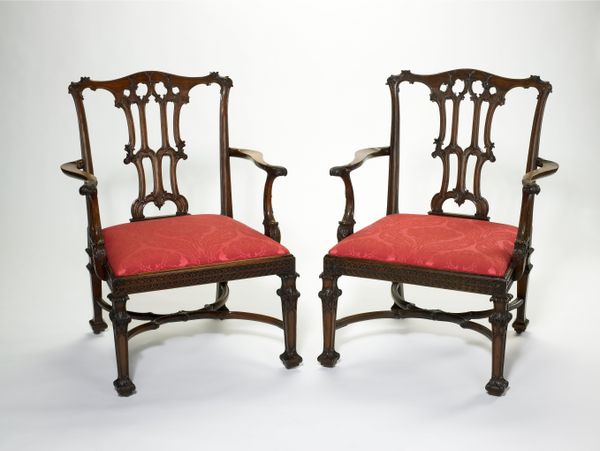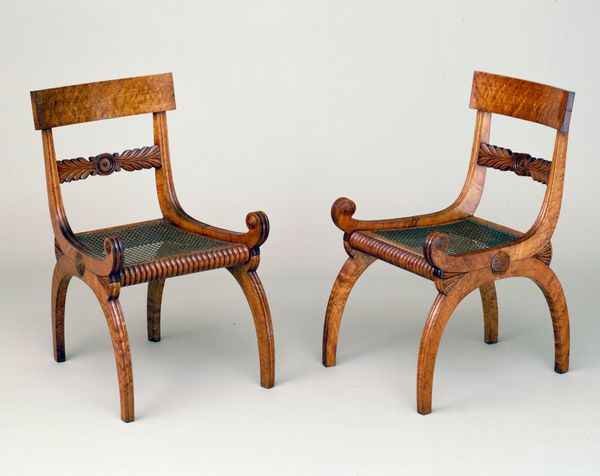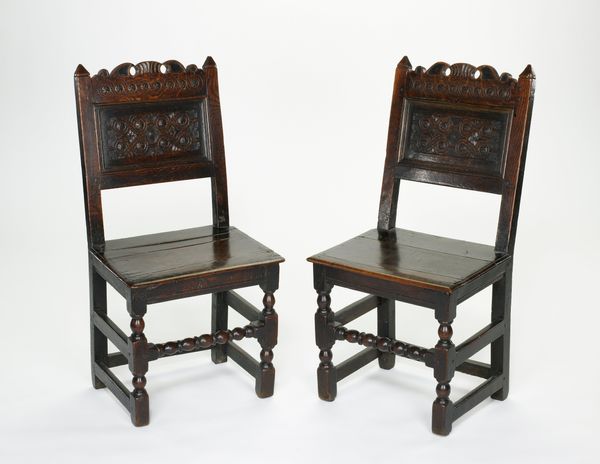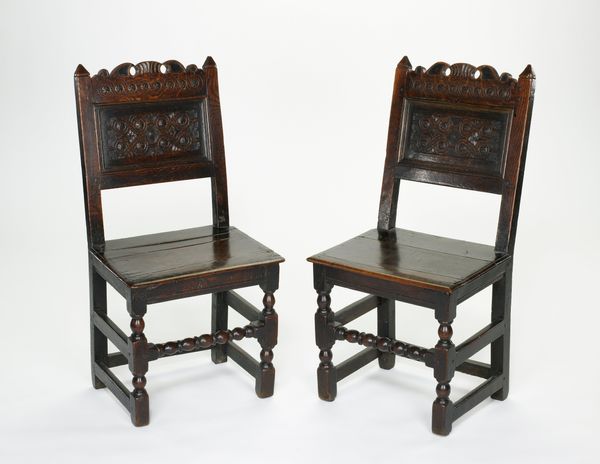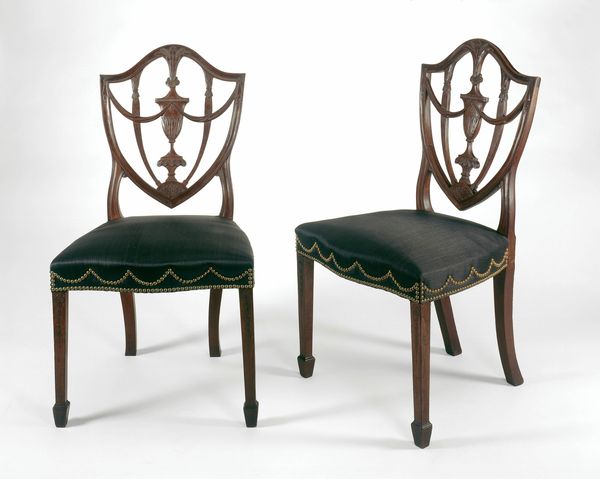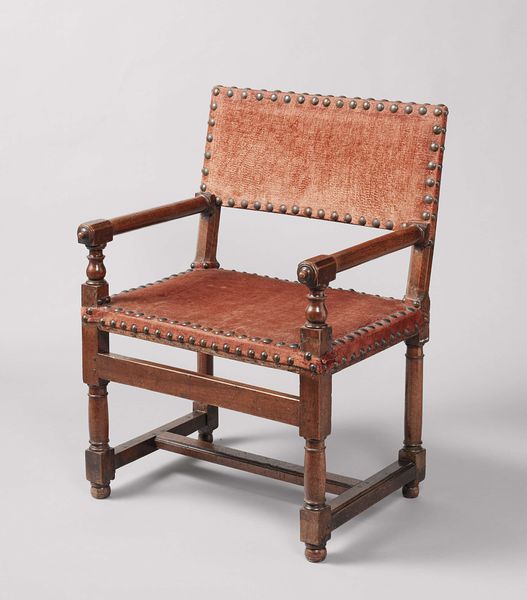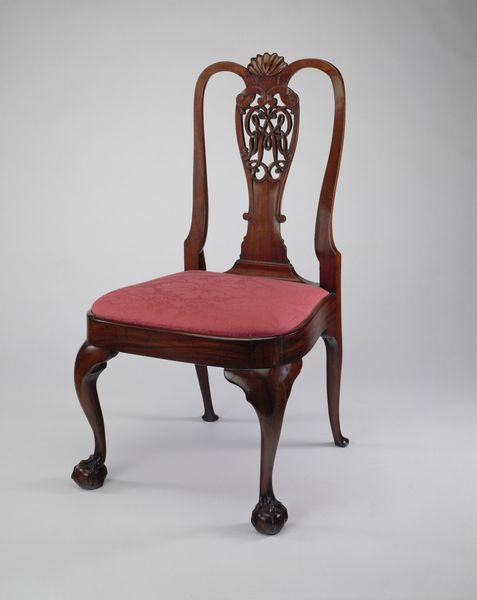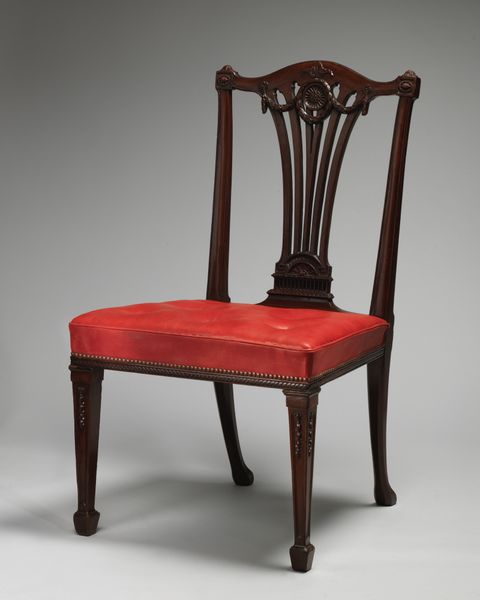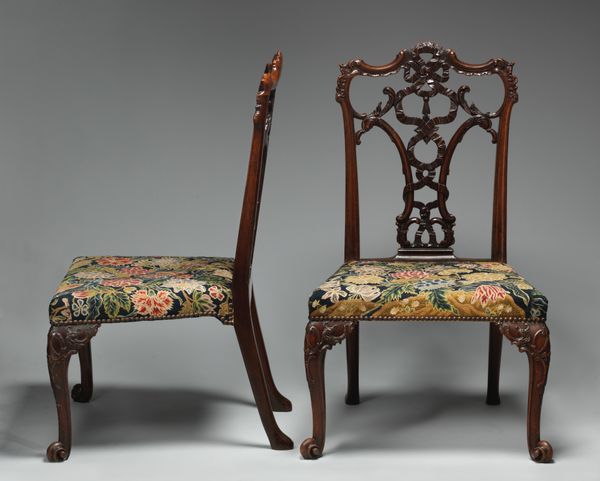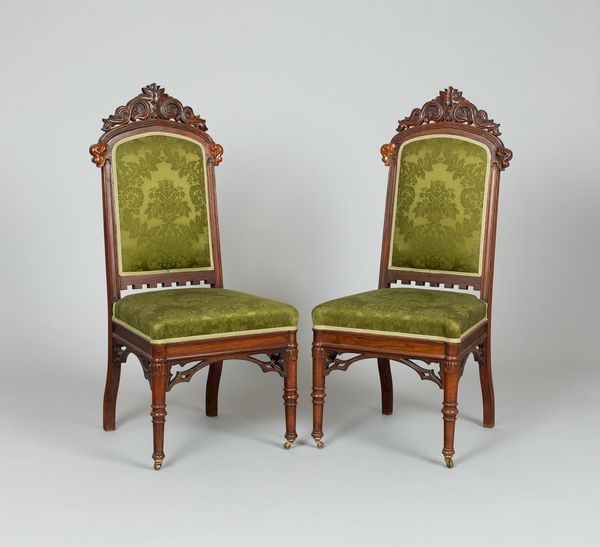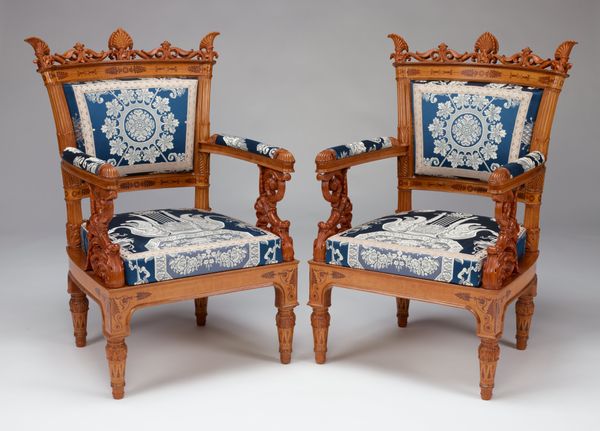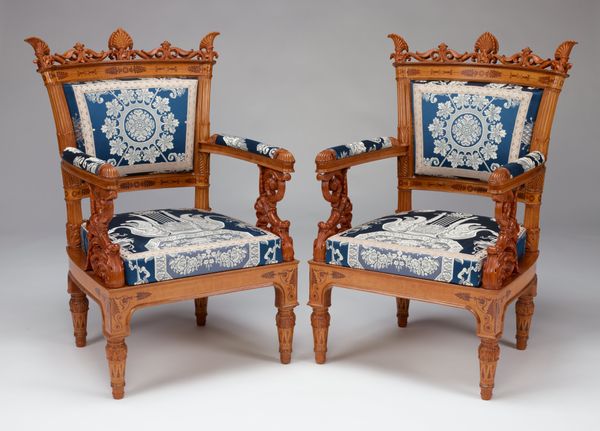
carving, wood
#
carving
#
furniture
#
ceramic
#
wood
#
rococo
Dimensions: 40 x 25 3/4 x 23 3/4 in. (101.6 x 65.41 x 60.33 cm)
Copyright: Public Domain
Editor: Here we have a pair of armchairs from around 1755, currently housed in the Minneapolis Institute of Art. They're crafted from wood and showcase intricate carving. The first thing that strikes me is how delicate and ornate they appear, despite their functional nature. What symbolism do you find embedded in these chairs? Curator: These chairs embody the Rococo spirit, a style saturated with symbolism and meant to evoke emotional responses. Consider the curves—nothing is purely linear. The 'S' scroll is visually echoed and speaks to a cultural desire for grace and elegance, signaling power, status and movement towards leisure. Editor: The ‘S’ scroll, like a signature? Curator: Precisely. Note also the openwork carving in the back, transforming the solid wood into something ethereal. What do you think that choice conveys about the owner's aspirations? Editor: Perhaps a desire for enlightenment or elevation above the mundane? Curator: An interesting idea! The wood itself also plays a part. Certain woods were associated with wealth, knowledge, and lineage. Even the fabric on the seat could have conveyed specific messages, based on its color and pattern. Each element tells a story about cultural values. Editor: I hadn't thought about the fabric itself holding symbolic meaning. Curator: The artisans encoded these objects with layers of meaning, intending them to resonate with viewers on many levels. We decode the imagery of the Rococo through inherited associations. Editor: It's incredible to think that something as simple as a chair could be such a complex repository of cultural memory! Curator: Absolutely. By recognizing how even functional art carries symbolism, we reveal continuity in our collective, lived experience.
Comments
minneapolisinstituteofart almost 2 years ago
⋮
This armchair represents the highest level of furniture craftsmanship and design in mid-18th century England. Combining Gothic ornament with contemporary Rococo elements, their design reflects the influence of Thomas Chippendale's book "The Gentleman and Cabinet Maker's Director" (1754). These chairs are numbered (IV and VIII) on the interior seat rails, and were apparently part of a larget set. Two identical armchairs (nos. II and X) are in the Victoria and Albert Museum, London, and a matching settee was formerly in the Werner Collection at Lutton Hoo, England.
Join the conversation
Join millions of artists and users on Artera today and experience the ultimate creative platform.
